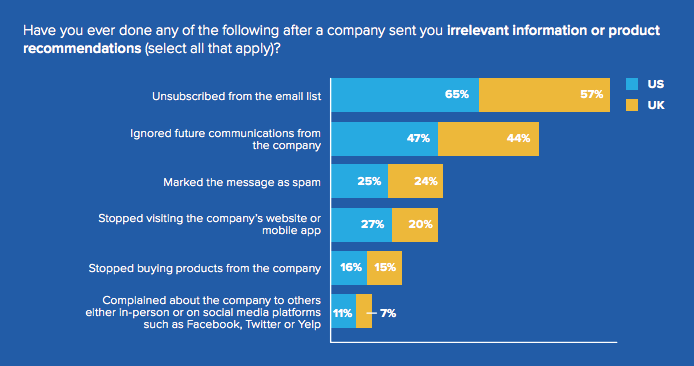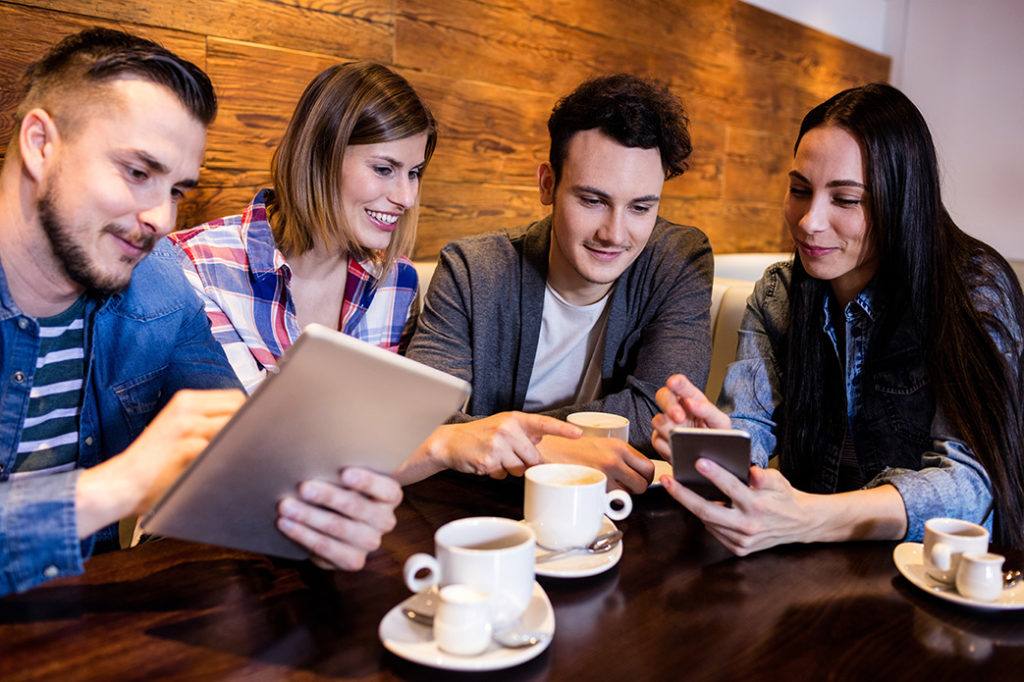It seems like common sense that the more tailored the information and offers you send to your customers, the more likely they are to buy and remain loyal. But it hasn’t been until relatively recently that Hospitality operators were able to access the gold mine of data that revealed their customers’ behaviour and preferences in order to capitalize on the opportunity that personalization affords.
With 65% smartphone penetration in Europe and across North America, the world is now at consumers’ fingertips which means their data is at yours. It’s widely acknowledged that it costs more (approx. 5x) to attract a new customer than to keep an existing one but yet 44% of companies have a greater focus on customer acquisition vs. 18% that focus on retention. There’s never been a better time for Hospitality operators to turn their attention (and their budget) towards getting to know their customers and using their data to inspire loyalty.
Before we get into your customers’ habits and behaviours, it’s worth taking a look at personalization from a higher level: personal choice. In today’s time-starved, on-demand, digital-savvy world, customers are engaging more and more with brands that offer them choice. A choice of how, when and where they interact with you as a company. By providing a complete, integrated service through mobile, kiosk, web or tablet and making sure context is maintained through the customer journey regardless of what device is used, you offer a more personalized, highly convenient experience. The benefit? Greater positive sentiment towards your brand, greater perceived value for money, a better, differentiated experience and ultimately: loyalty.
With that in mind, here are our 3 fail-safe steps to boosting sales through personalization:
- Knowledge is power
If you want to offer highly personalized loyalty programs, serve up extremely tailored offers or marketing campaigns or provide brilliantly bespoke communications and information, you need to get to know your customers first.
The cost of a blanket communications approach to guests is high as Gigya illustrates below:

So how do you start gathering this kind of rich data on your guests? Here are some suggestions:
- Mobile App: This is the single most powerful channel for collecting rich, highly personalized information from your customers. By using your order and pay app, you can gather data on where your customer likes to eat, what time, how much they order, if they tend to order in groups (such as a family), how they like their meals cooked and customized, how they like to pay and much more.
- Loyalty registration: When guests sign up to your loyalty program, you can gather information such as their name, date of birth, email, address and what stores they like to eat at. This data can then be used to build a more rounded profile of your guest and supplement information gathered from mobile.
- Marketing activity: Although you need the data before you can start marketing effectively to your guests, once you do, you can use their responses to campaigns to build a better profile of your customers over time. For example, certain demographics might respond better to a store-specific offer, while others might prefer a cumulative, rewards-based offer. Redemption rates might be higher in certain demographics when offers are served up via mobile vs. email for example.
- Segmentation
Once you start gathering detailed information on your customers, you’ll start to notice they fall into certain ‘buckets’. Whether its high value customers, customers with families, certain behaviours seen within a particular age group, their dietary requirements etc, these segments are key to setting up the structure of more personalized marketing campaigns.
An example of good, personalized segmentation is being able to offer your vegetarian customers a discounted or free veggie burger on their birthday at a store close to them. You’ll have the data that shows this specific person is a vegetarian, it’s their birthday and they have purchased many of this particular type of veggie burger in the past. It a much more compelling offer than sending out a generic ‘Happy birthday, here’s a 10% off a coffee’ message and it fosters greater goodwill between you and your customers which translates to increased loyalty and a boost to your bottom line.
- Take it a step further
Segmentation is a good step towards personalized marketing, but in today’s world of service-on-demand and smartphone addiction, you can really take personalization to the next level, offering the ultimate in value and convenience for your customers.
For example, consider the geo-location capabilities on your guests’ mobile devices. By pinpointing their exact location and knowing a little bit about their past behaviours, you can catch guests in the vicinity of your stores and communicate with them to entice them through the door.
Imagine you’re walking down the street and you receive the following message:
“Morning James! We’ve not seen you for a while and we have a white chocolate and blueberry muffin with your name on it. We’re just around the corner, pop in!”
You’ll be armed with the knowledge that James used to come in quite regularly before work for his coffee, muffin and bottle of sparkling water. However, recently, the frequency of his visit has dropped off. But thanks to location functionality on his mobile, you can tell he’s close by so by enticing him back to your store when it’s most relevant to him and with a personalized offer, you’ll not only be more likely to get a purchase from John on this occasion, but by reminding him he’s special and you pay attention to him and his needs as a person, he’ll probably be coming back for more in the future.
As an operator, the time has never been better to up your personalization game. The tools and technologies are there to make it easier than ever to get to know your customers on a personal level and leverage that data to drive better, more compelling campaigns and offers. Personalization really is the gift that keeps on giving. It can help you build trust with customers, make them feel valued, offer them convenience and a differentiated experience to your competitors and, most importantly, will encourage them to come back and use you time and again.





